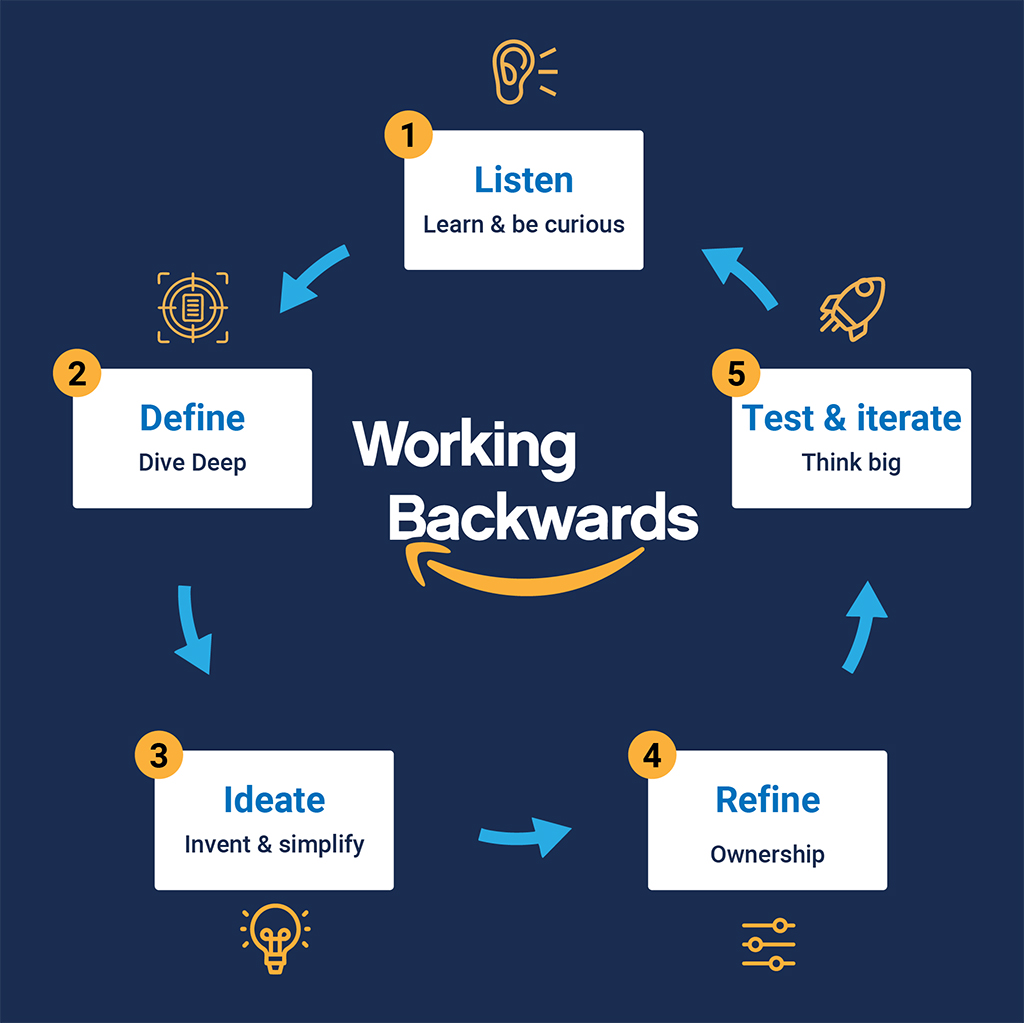Most working cultures believe that the only way to progress is by planning and looking ahead. What if we told you that contrary to popular belief, the better alternative is actually by working backwards!
This unique, innovative strategy created by Amazon, is closely linked to their fundamental guiding principle of customer centrism. They believe that it is only by beginning the process with a focus on customers can a company successfully figure out what products to build to satisfy their target audience.
In keeping with this mindset, there are five key steps to Amazon’s Working Backwards Method:
- Who is the customer
- What is the customer problem or opportunity
- What is the most important customer benefit
- How do you know what customers need or want
- What is the customer experience
By using this customer-centric, working backwards method, the product team has to first think through all the reasons for building the product. Once they’ve done that, they can then draft a compelling news release to announce the product launch to attract the target consumers and encourage them to purchase it.
Based on this method, every successful press release should include these vital ingredients:
- The product’s name
- The intended customer
- The problem the product solves
- The benefits to the customer
- A call to action telling the customer how to take advantage of the product
There are several noteworthy benefits of using the working backwards method.
For one, it provides the product team with an intuitive understanding of a product’s viability. Drafting a press release is much simpler and more cost and time effective than creating a minimum viable product.
Secondly, the press release itself can offer useful guidance during the product development stage. It can help keep the team on track and focussed on the key objectives of the product.
By employing the working backwards method ourselves at Azul Arc, we have been able to continue to enhance our “blue print for build” framework. It’s an approach that helps us combine discovery with application architecture from the perspective of user experience. Because it is only by really understanding who your customers are and using the customer empathy map can we define the problems, pain points and opportunities we are aiming to address. This is not only a critical initial step in the process, but it goes beyond focussing on the functions and features we want to build. Most importantly, it helps us clarify the outcomes we want to achieve and define the right priorities.
So instead of following the herd and the common trend of always focussing forwards, sometimes it pays to break the pattern, and try out this unique approach of working backwards!
